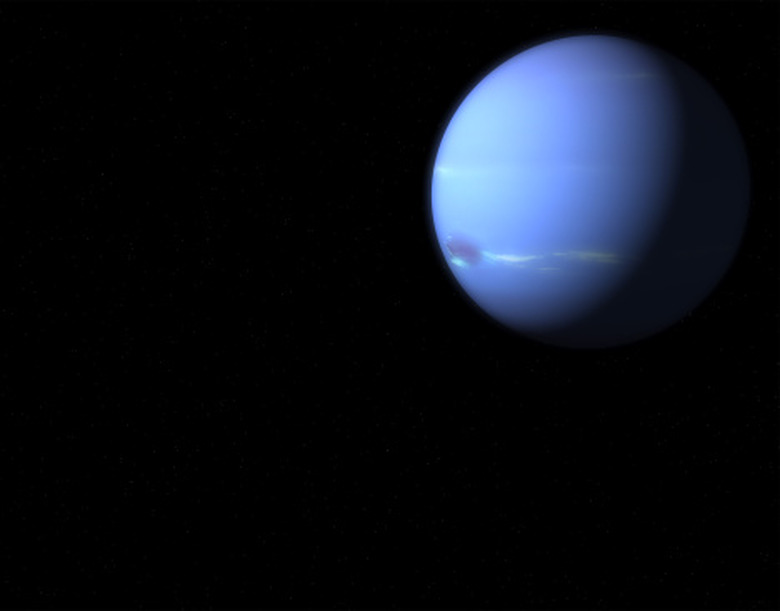List Of 10 Short Facts About Neptune
Neptune, a dark, cold planet, was thought to exist prior to its discovery because the orbit of another planet, Uranus, was being affected by the gravitational pull of another large celestial body that turned out to be Neptune. Neptune was first seen by Galle and d'Arrest in 1846.
Location of Neptune
Location of Neptune
Neptune is the eighth planet from the sun and is the most distant from Earth. At its closest point to Earth, it is approximately 2.77 billion miles away.
Neptune Appears Blue
Neptune Appears Blue
Neptune appears blue to observers, due in part to the fact that the methane gas on Neptune absorbs red light. However, this absorption does not explain completely the blue color and scientist do not yet know what other factors are at play.
Composition of Neptune
Composition of Neptune
Neptune is a gas giant composed primarily of a uniform distribution of gases, such as hydrogen and helium. It is believed that Neptune has a small solid core about the size of Earth.
Size of Neptune’s Orbit
Size of Neptune's Orbit
Neptune's orbit is quite large; it covers 2,795,173,960 miles.
Temperature of Neptune
Temperature of Neptune
Neptune is a cold planet, inhospitable to humans. The effective temperature on Neptune is minus 353 degrees Fahrenheit.
Winds on Neptune
Winds on Neptune
Winds on Neptune blow at supersonic speeds. The speed of Neptune's winds is estimated to be nearly 1,243 miles per hour, faster than the winds measured on any other planet.
Neptune Has Rings
Neptune Has Rings
Discovered in the 1980s, rings of matter orbit Neptune. It is not known what materials make up the rings. One of the rings has an unusual twisted appearance. All of the rings have been named. Some of the names are Lassell, Adams, Galle and Leverrier.
Neptune’s Heat
Neptune's Heat
Neptune generates heat from an internal source. The heat generated by Neptune is more than two times the amount it gets from the sun.
Neptune’s Spots
Neptune's Spots
Like Jupiter, Neptune experiences large storms that come and go. They appear as spots on the surface of Neptune and are thought to arise due to differences in the temperatures of the various atmospheric layers of Neptune.
Neptune Has Moons
Neptune Has Moons
Neptune has over 20 satellites, or moons, that orbit the planet. The moons of Neptune have been given names. Names of the moons include:
- Triton
- Neso
- Sao
- Nereid
- Naiad
- Thalassa
- Galatea
- Psamathe
- Larissa
- Despina
Cite This Article
MLA
London, John. "List Of 10 Short Facts About Neptune" sciencing.com, https://www.sciencing.com/list-10-short-neptune-8496586/. 24 April 2017.
APA
London, John. (2017, April 24). List Of 10 Short Facts About Neptune. sciencing.com. Retrieved from https://www.sciencing.com/list-10-short-neptune-8496586/
Chicago
London, John. List Of 10 Short Facts About Neptune last modified March 24, 2022. https://www.sciencing.com/list-10-short-neptune-8496586/
